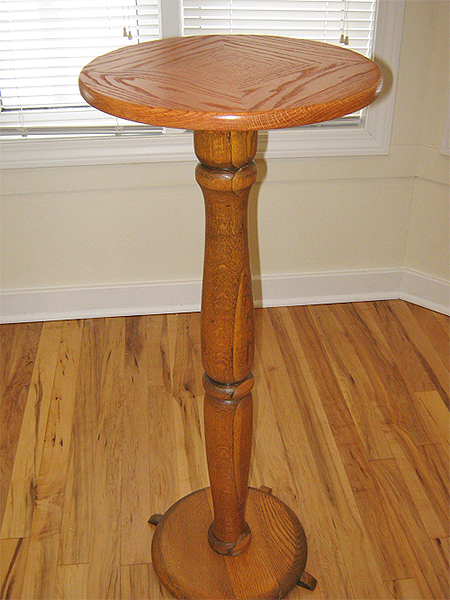End grain — once hidden from view but now often highlighted — is one example of a woodworking trend that has changed over time. In response to Rob’s editorial on this topic last week, readers share other shifts in woodworking perspective. – Editor
“As a teenager, I was taught by my woodshop teacher that you could not rout a decorative roundover, ogee, etc., on the inside of a face frame after the frame was assembled. He said it did not look professional. You had to miter the corner, or cope-and-stick as it is called today.” – Neil McCullough

“In regard to end grain, I think hiding end grain is still valid and project-dependent. I recently had a dilemma repairing an antique pedestal plant stand (see photo above). It was originally handmade for my aunt by a local craftsman, probably in the 1940s or 50s. It is made of oak, except for the round top that had been replaced with a piece of plywood covered with a wood grain contact paper! I’m sure the original top was a parallel glue-up and cut into a circle, similar to the base. However, I decided to make the blank from four triangular pieces glued up so that the edge grain would predominantly be in the joint, leaving mostly edge grain around the outside (probably there is a name for doing this that would have saved a lengthy description).” – Bill Koski
“Three things that have changed in the last 50 years are: (1) being able to see the grain of the wood after it’s finished; (2) knots, which are now looked upon as an added enjoyment while looking at a fine piece and (3) live edge is no longer cut off but is in style. But the most important one thing that has happened in this time is the prevalence of female woodworkers. Yes, the gals have taken their spot in the woodshop. There are some very good female woodturners on YouTube. Welcome to the woodshop, gals.” – Lowell Taylor
The post Fresh Perspectives appeared first on Woodworking | Blog | Videos | Plans | How To.
from Woodworking | Blog | Videos | Plans | How To https://ift.tt/2XQzv4T
没有评论:
发表评论